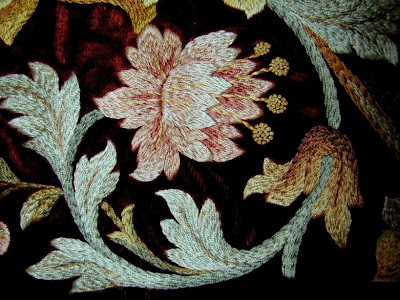The swatch below, from about 1880, features a large blue orchid with botanically correct leaves. This is one of the few orchid motifs that I've found from that era.
By 1900, the orchid started being used in stylized versions on Arts & Crafts and Art Nouveau textiles. The next two swatches depict stylized orchids from about 1900. Both are the same motif in different colors.
These next two pictures are very stylized versions of orchids from the first decade of the 20th century.
Despite the sensational beauty of the orchid flowers, the plant will never rival the rose as the favorite flower in all of France. Below is a picture of The Rose - depicted as a queen on the throne with the insects paying homage - from a 19th century French illustrated book called Les Fleurs Animées.















